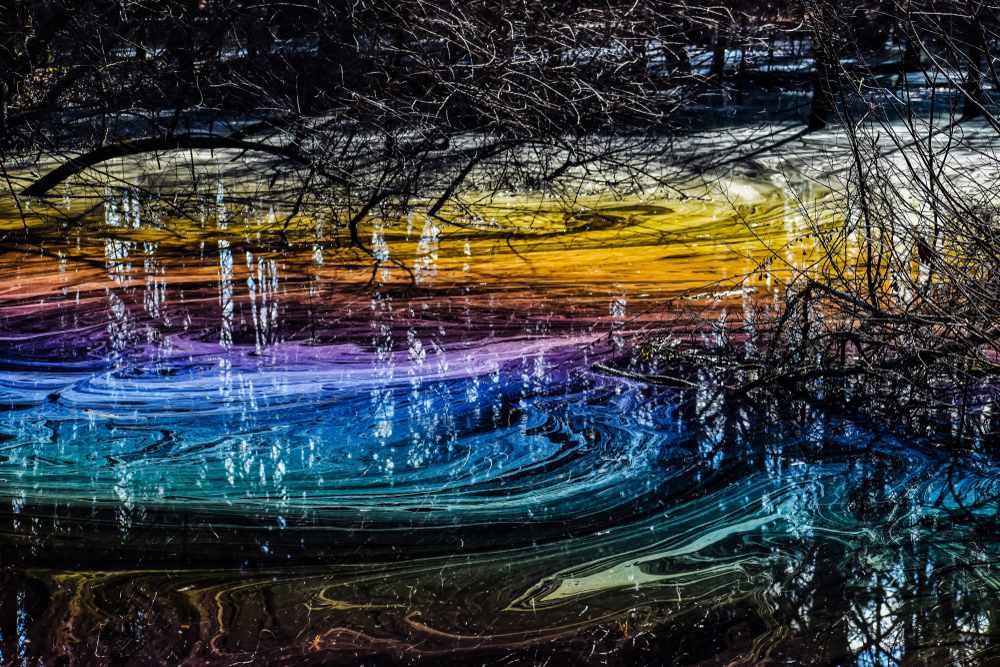Swamps typically bring to mind an array of mushy greens and murky browns, but in Virginia, that all goes out the window in winter. Here, a swamp with rainbow waters can be found along the Bald Cypress Trail in First Landing State Park. The curiously colorful display is the result of rotting leaves, and hoo boy, decomposition never looked so good.
The rest of this article is behind a paywall. Please sign in or subscribe to access the full content.
First Landing State Park in Virginia, USA, sits on Cape Henry with trails that weave deep into the cypress swamps. As you tread the boardwalks and observation platforms that take you out over the water, you just might be lucky enough to spot something strange: a rainbow swamp.
The phenomenon is mostly seen along the Bald Cypress Trail, which, as the name suggests, is populated by lots of bald cypress trees. These conifer trees are native to the southeastern United States and are also known as swamp cypress due to their tolerance for flooded terrain.
As deciduous trees, bald cypress shed their needle-like leaves annually. They start out green, but in the fall adopt a russet-red that no doubt gets leaf peepers hot under the collar. And that’s not the only colorful trick they have up their branches. As the leaves fall off and land in the water, they rot, and the rainbow color all comes down to the things that leach into the watery environment as decomposition sets in.
“The rainbow sheens found as a thin film on top of pooled water in swamps and marshes are the result of natural oils released by decaying vegetation or the biological processes of anaerobic bacteria reducing iron in soil,” Jeff Ripple, a former Florida swamp walk leader, told the BBC. “Movement by sheet flow, current or wind disturbance would destroy the fragile rainbow film.”

The rainbow effect also occurs in the bald cypress swamps of Alabama.
Image credit: Danielle Wiggins/Shutterstock.com
For this reason, your best bet for spotting the arresting rainbow film is in smaller areas where the water is more sheltered from the processes that can disrupt its formation. You’ve likely seen the prismatic light trick before, as it’s the same thing we see when human-made oils get leaked into bodies of water like the ocean.
The good news for our rainbow swamp is that the array of colors isn’t the result of pollution; it’s just a fun byproduct of rotting leaves. The brilliance of the display can depend on the position of the Sun, as it’s the light refracting through the leaves’ oils that creates the effect. For this reason, winter is a good time to see it as the Sun is more likely to be at just the right angle to put on a good show.
The magnificence of the swampscape is made all the more magical by the shadows of the cypress trees and their knees that cut across the water. Never heard about cypress knees before? They’re cone-shaped growths that crop up on the buttress roots of swamp cypress and, curiously, nobody’s quite sure what they do.
This article first appeared in Issue 29 (Dec 2024) of our digital magazine CURIOUS. Subscribe and never miss an issue. Subscribe for full access to recent issues delivered to your inbox.
Source Link: Deep In Virginia, When The Light Hits Just Right, A "Rainbow Swamp" Appears